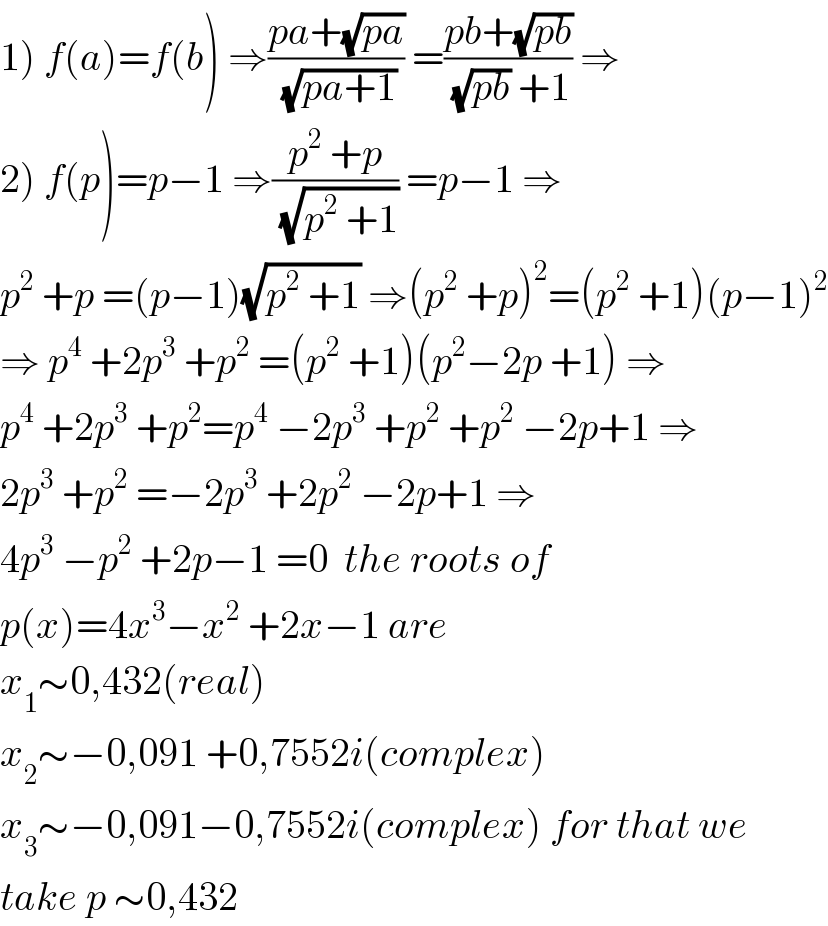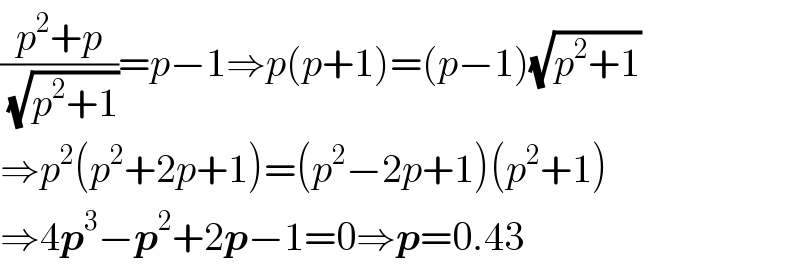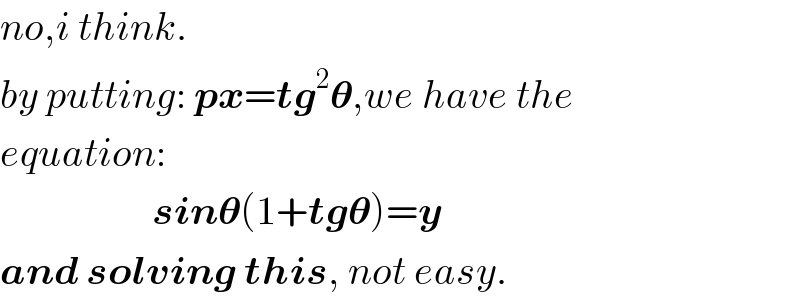
Question and Answers Forum
Previous in Relation and Functions Next in Relation and Functions
Question Number 38533 by behi83417@gmail.com last updated on 26/Jun/18

Commented by math khazana by abdo last updated on 03/Aug/18

Commented by math khazana by abdo last updated on 03/Aug/18

Answered by behi83417@gmail.com last updated on 27/Jun/18

Commented by MrW3 last updated on 27/Jun/18

Commented by behi83417@gmail.com last updated on 27/Jun/18

Answered by MrW3 last updated on 27/Jun/18
![f′(x)=(px+(√(px)))(−(p/(2(px+1)(√(px+1)))))+(1/(√(px+1)))(p+(p/(2(√(px))))) f′(x)=(p/2)[−((√(px))/(px+1))+(1/(√(px)))] f′(x)=(p/(2(px+1)(√(px)))) f′(x) >0 if p>0 f′(x) <0 if p<0 i.e. f(x) is always increasing or always decreasing. i.e. if f(a)=f(b)⇒a=b⇒(a/b)=1 f(p)=((p^2 +p)/(√(p^2 +1)))=((p(p+1))/(√(p^2 +1)))>p but p−1<p ⇒f(p)≠p−1 ⇒no solution for f(p)=p−1](Q38565.png)
Commented by behi83417@gmail.com last updated on 27/Jun/18

Commented by MrW3 last updated on 27/Jun/18

Commented by ajfour last updated on 27/Jun/18

Commented by behi83417@gmail.com last updated on 27/Jun/18

